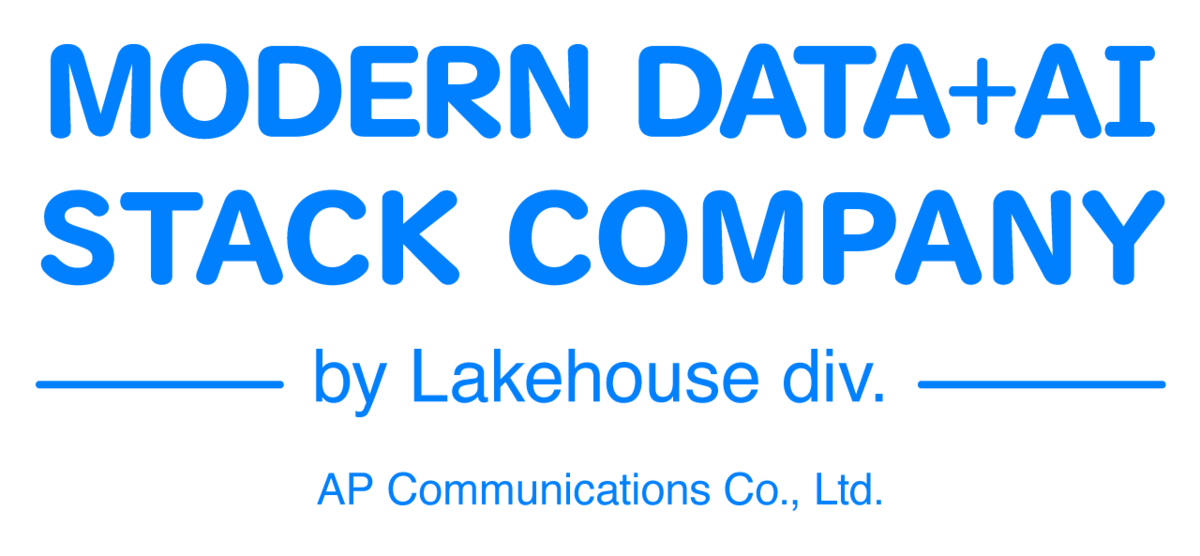Introduction
This is May from the GLB Division Lakehouse Department.
We will share "Data Application Bundles: A Standard, Unified Approach to Deploying Data Products on Databricks" based on reports from members participating in the local Data + AI SUMMIT2023 (DAIS).
This session introduces Databricks Asset Bundles, a new standard approach to deploying data products on Databricks. I'll walk you through the deployment options and their pros and cons for data teams, data product owners, and colleagues in operations such as DevOps and engineering.
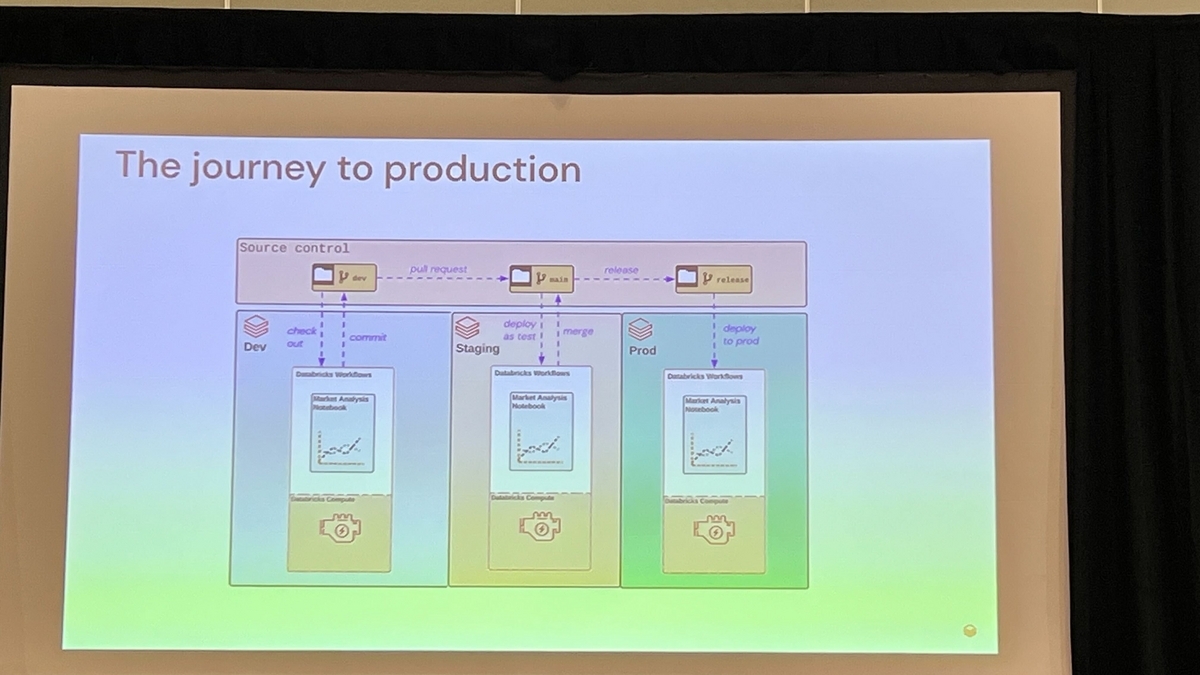
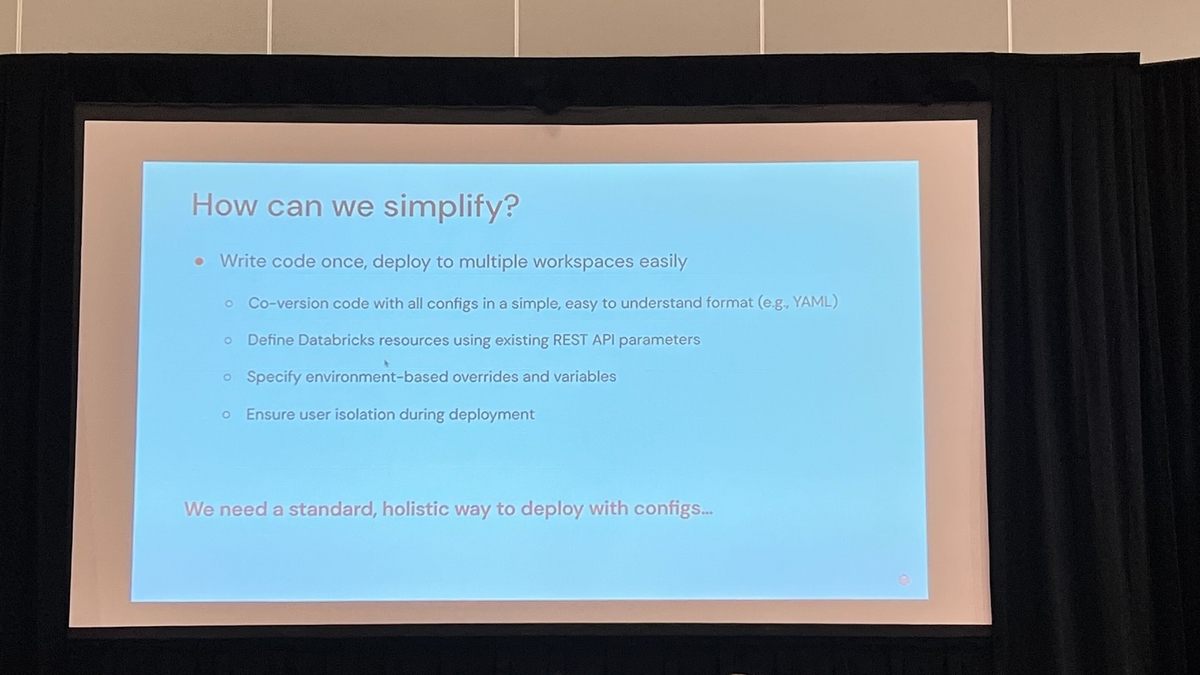
Overview of Databricks Asset Bundles
Databricks Asset Bundles are a new way to streamline and standardize data product deployments. This makes it easy for data teams, data product owners, operations departments such as DevOps and engineering to achieve CI-CD (continuous integration and continuous delivery) for products built on Databricks.

Choices of Deployment Methods and Their Advantages and Disadvantages
By using Databricks Asset Bundles, you get the following benefits:
- Standardized Deployment Process: With Databricks Asset Bundles, your data product deployment process is standardized and consistent across your organization.
- Simplified Deployment: Databricks Asset Bundles simplify and streamline the deployment of data products. This allows data teams to bring data products to market faster.
- Improved security: Databricks Asset Bundles provide features to improve the security of data products. This reduces the risk of data leaks and unauthorized access.
However, using Databricks Asset Bundles also has some drawbacks:
- Learning Cost: Using Databricks Asset Bundles requires learning new concepts and tools. This takes time and effort.
- Migration Costs: Migration costs will be incurred when migrating existing data products to Databricks Asset Bundles. This includes redesigning and retesting existing data products.

About the latest concepts, features and services
Databricks Asset Bundles offer the latest concepts, features and services such as:
- Versioning: Databricks Asset Bundles support versioning of data products. This allows data teams to track the change history of data products and roll back to previous versions if necessary.
- Automated Deployment: Databricks Asset Bundles support automated deployment of data products. This enables data teams to streamline data product deployments and reduce manual errors.
- Integration Testing: Databricks Asset Bundles support integration testing of data products. This enables data teams to ensure data product quality and accelerate time to market.
Databricks Asset Bundles streamline and standardize your data product deployment process. This provides an overview of deployment options and their advantages and disadvantages for data teams, data product owners, colleagues in operations departments such as DevOps and engineering, and organizations looking to standardize the use of CI-CD for products built on Databricks. explained.
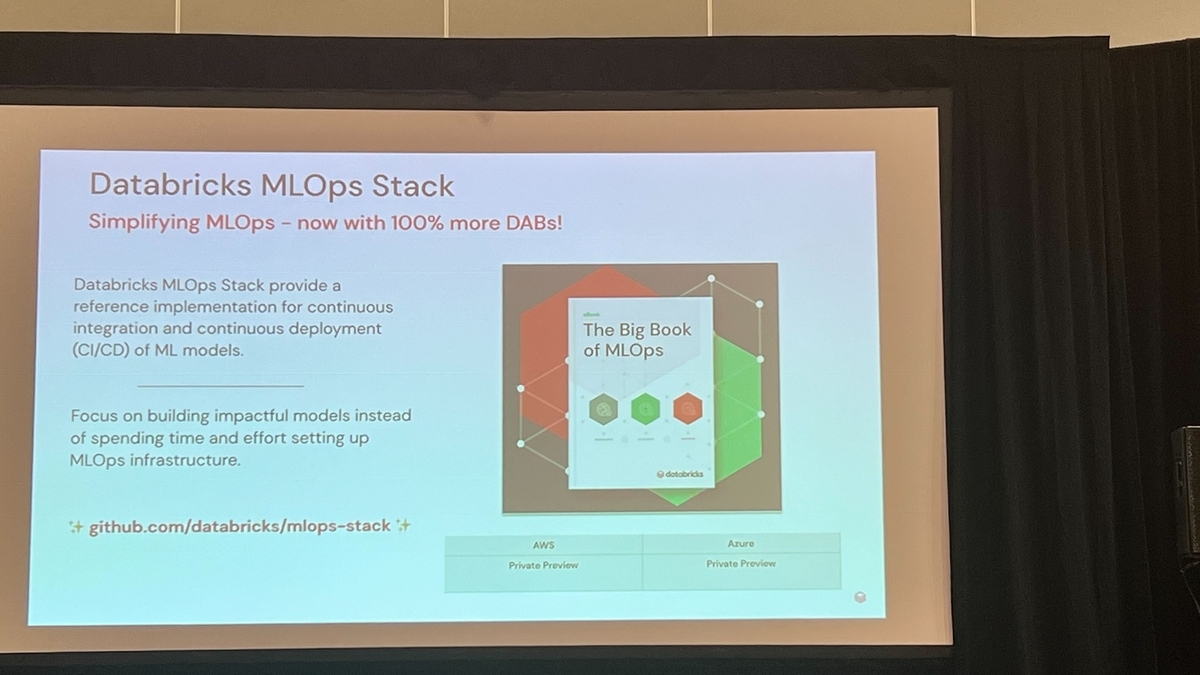
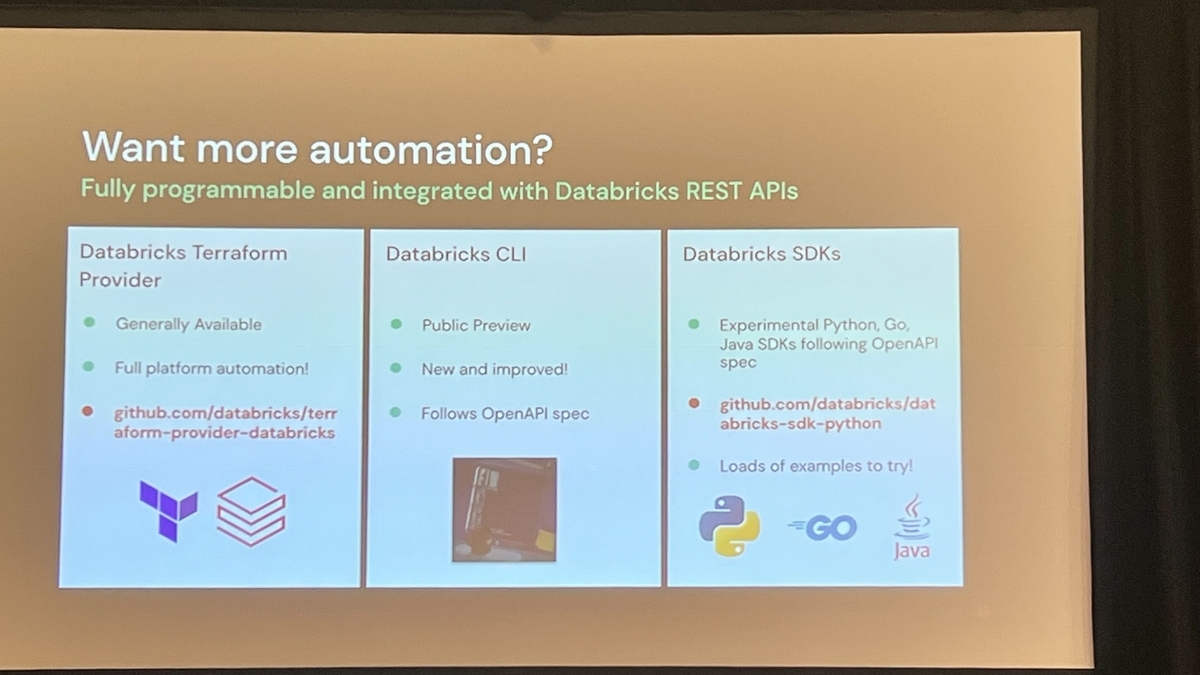
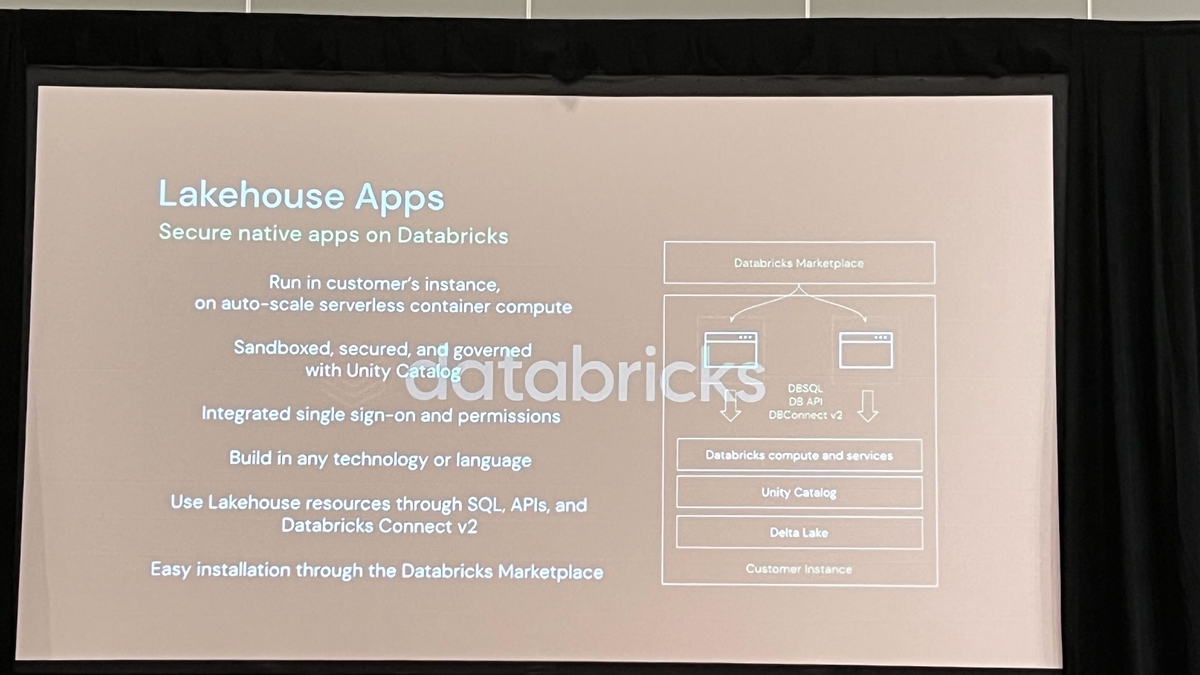
Conclusion
This content based on reports from members on site participating in DAIS sessions. During the DAIS period, articles related to the sessions will be posted on the special site below, so please take a look.
Translated by Johann
Thank you for your continued support!
